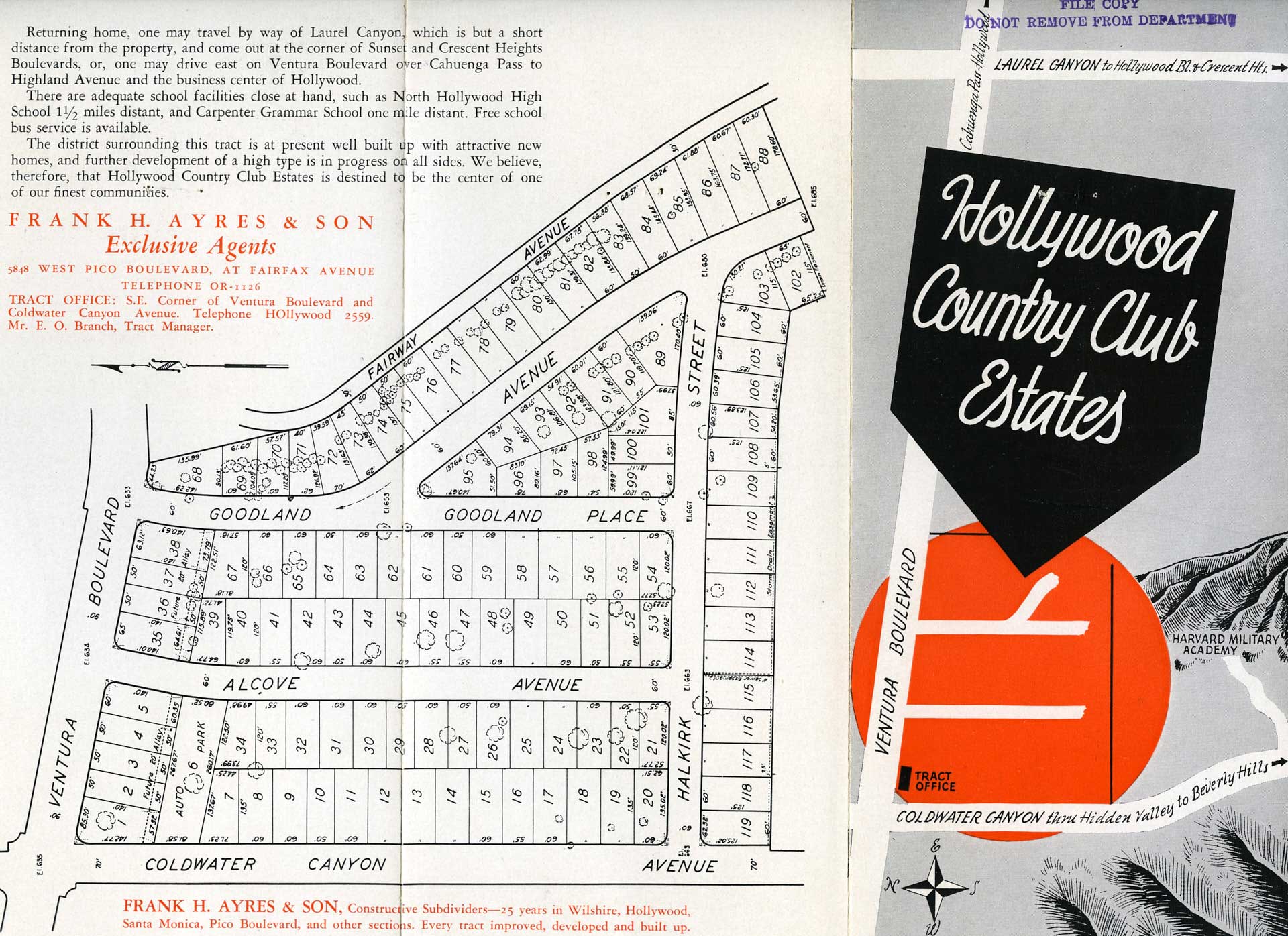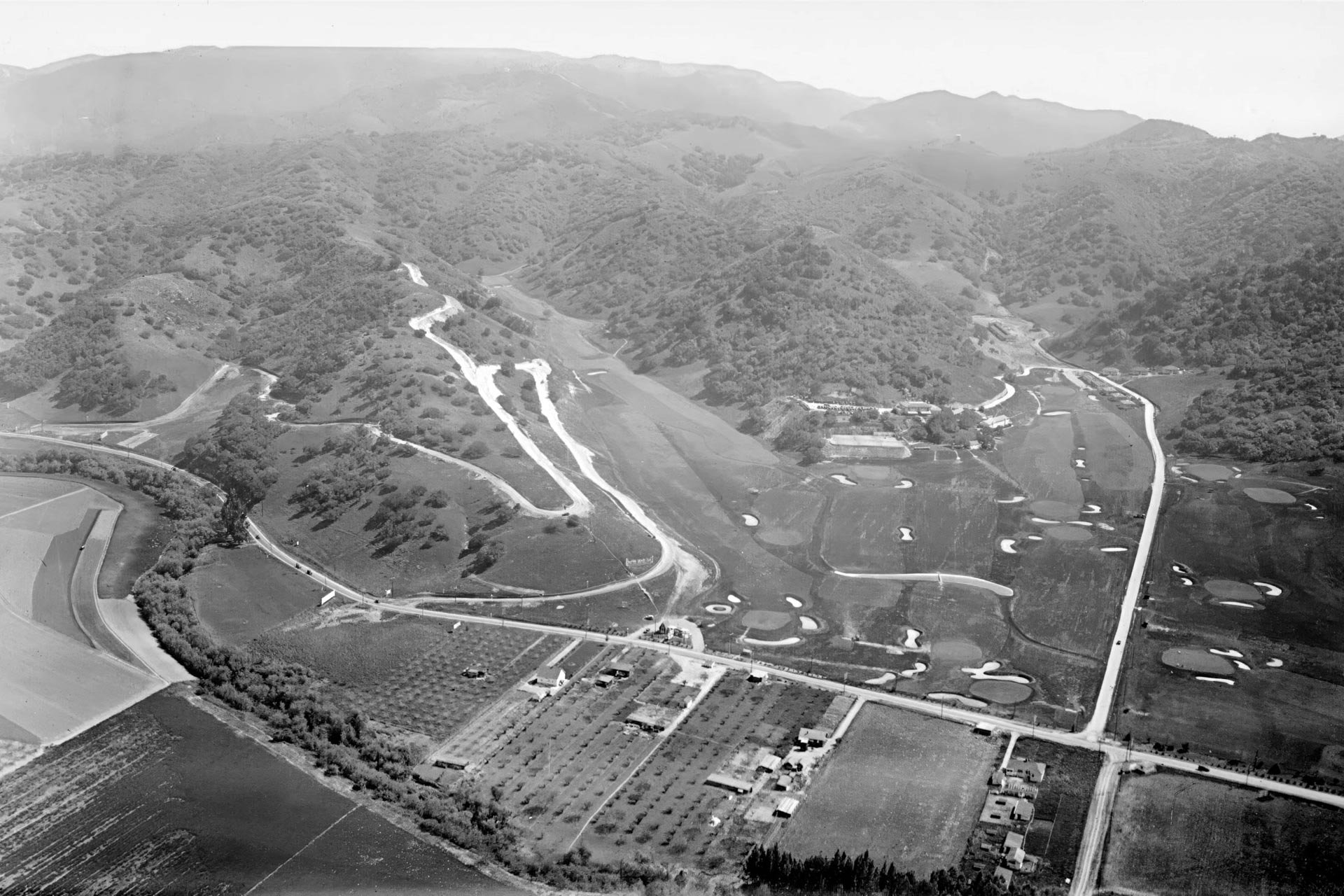
Long forgotten today, the upscale Hollywood Country Club — located, despite its name, in Studio City — represented the aspirational hopes of its founders. Built on land southeast of Ventura Boulevard and Coldwater Canyon, the club featured amenities attractive to any country squire. It remained in operation for only 18 years, but its lush facilities and grounds ushered in a wave of other country clubs throughout the surrounding San Fernando Valley. However, financial struggles proved to be its ultimate handicap.
Many viewed the area just south of what was then called Ventura Road as a bucolic paradise in the early 1900s. Los Angeles residents began migrating to the Valley to purchase their first homes, often a small farm or ranch on which to raise crops and livestock. Others saw it as the perfect sportsman’s haven for enjoying leisurely pursuits and high-end living.

Hollywood itself lacked open space for a private club, as wealthy out-of-state residents owned winter retreats in the Hollywood foothills, farms dotted what is now Beachwood Canyon and the city of Los Angeles owned over 3,000 acres bequeathed to it by Griffith J. Griffith, eventually to become Griffith Park. Thus, town inhabitants turned their eyes to the San Fernando Valley.
The early 1900s saw several failed attempts to form a country club. In 1904, about 75 leading Hollywood residents organized a club by that name, but not until 1907 was a large sum pledged to purchase land in Claussen Canyon, known as Beachwood Canyon today. They incorporated and drew up plans, only for finances to fall apart. A different group tried again in 1913, ending with the same results.
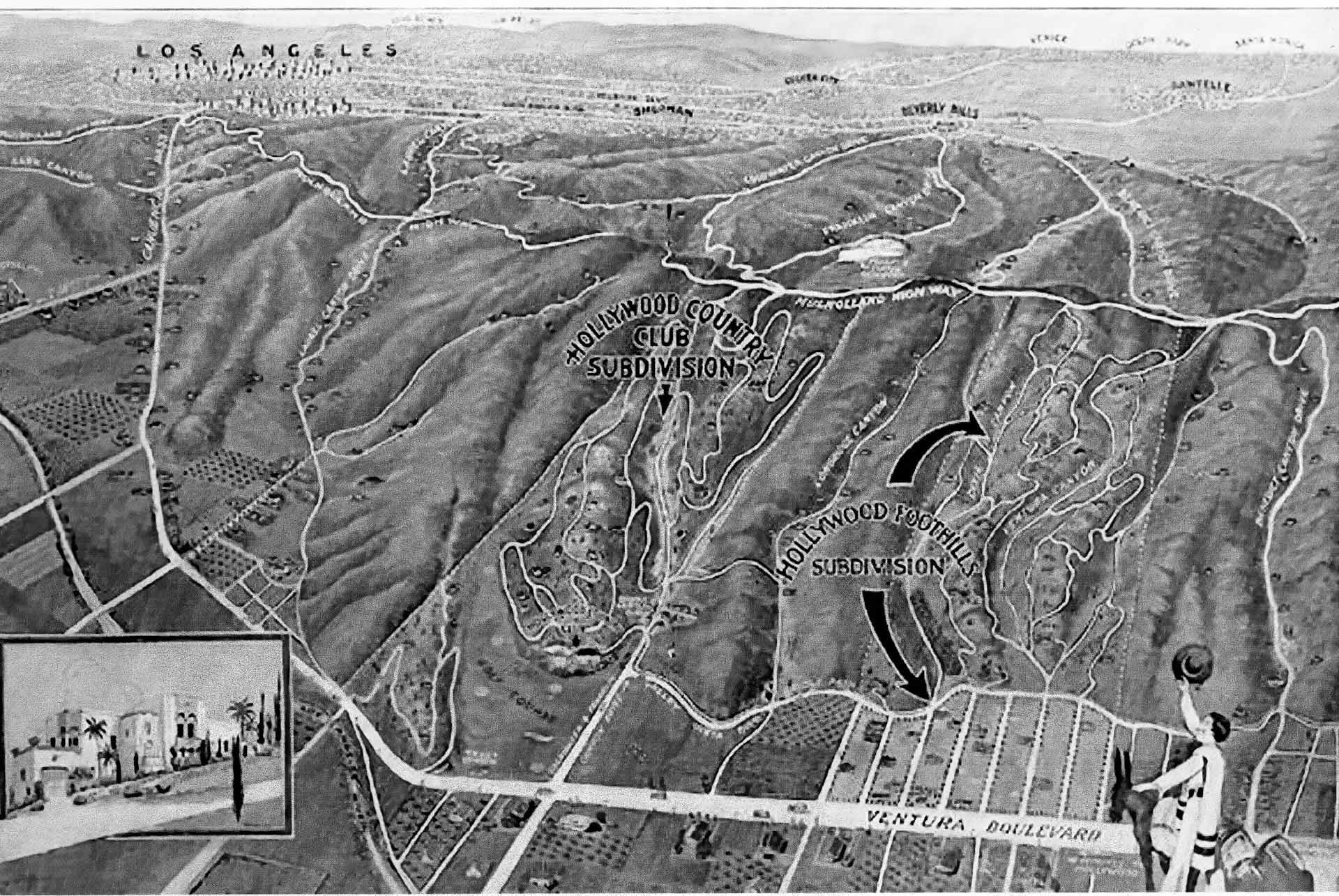
Club organizers finally succeeded in 1919, thanks to new board members Cecil B. DeMille and Douglas Fairbanks. Members pledged enough funds to purchase Imperial County millionaire W.F. Holt’s palatial 12-room Mission Revival mansion south of Ventura Boulevard and 348 picturesque acres lining Coldwater Canyon up to the crest of the Santa Monica Mountains for $200,000, with his mansion to serve as clubhouse.
After Holt relocated his large dairy farm from the property, Hollywood Country Club began renovations. They rehabilitated stables, upgraded six bungalows and constructed tennis courts, a gun club, a children’s play area, patios, a Japanese tea garden, a pool, a gymnasium and reflecting pools. The club hired William G. Amor and J.L. Egasse to design a challenging 6,100-yard, 18-hole golf course for men nestled between foothills and canyons on the east side of Coldwater, and a nine-hole course for women on the west.
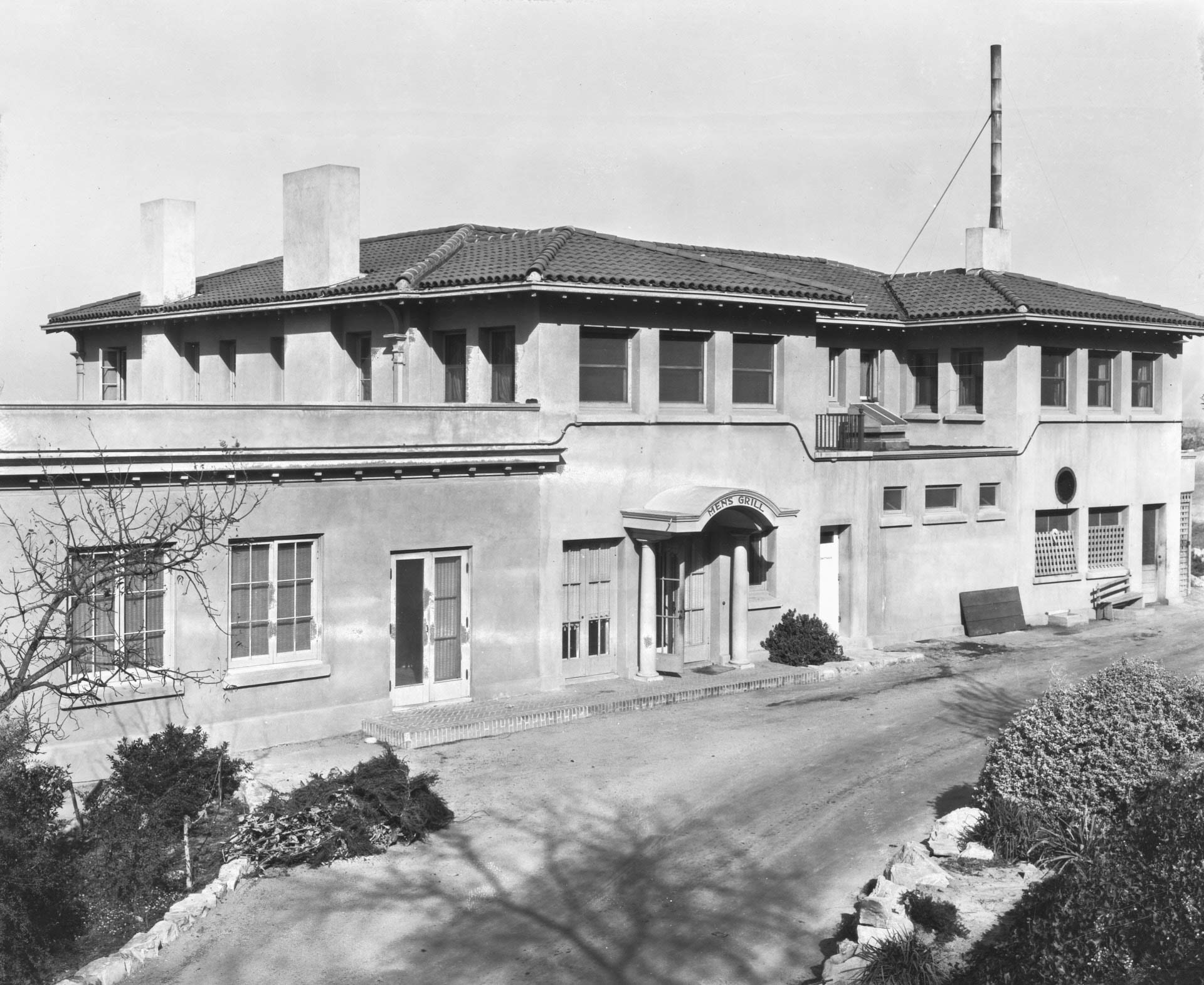
Hollywood Country Club finally opened to guests on October 23, 1920, after extensive renovations to the home and completion of the first 10 holes of the golf course. Members paid only $100 in initiation fees and $100 in yearly membership fees to join the ostentatious, nonprofit organization. Opening-day festivities featured a sweepstakes golf tournament among members, other athletic contests and inspection tours of the facilities, concluding with a banquet and dance that night.
Members loved the club’s beauty and extravagance, hosting business meetings, smart luncheons and get-togethers in its lavish dining room and other elaborate chambers, showing off their wealth or business success. Women enjoyed social activities on the second floor, which was reserved specifically for them. Large groups held celebrations, weddings and other special events in the first floor’s elegant and lush banquet hall and ballroom.
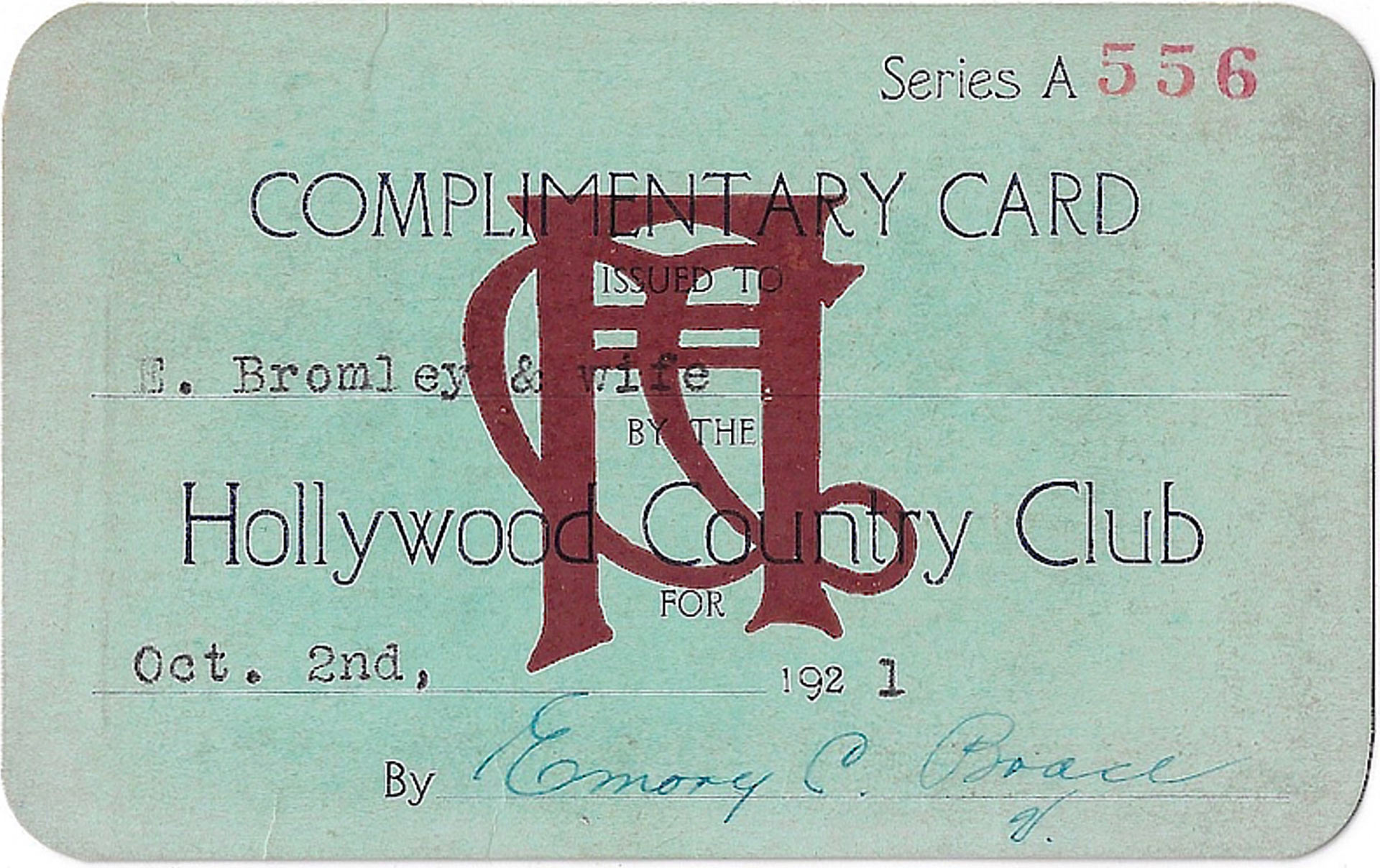
Many considered the beautiful golf course and the newly constructed clay tennis courts among the best on the West Coast. The California Golf Association organized local, county and statewide tournaments at Hollywood Country Club, with many featuring exciting, nail-biting competition on the challenging course, laden with sand traps and ponds. The clay tennis courts also hosted many tournaments, starting with the Southern California championship.
Although it was a magnificent property, organizers’ oversized dreams overwhelmed finances. The low cost of dues and membership fees failed to cover the expenses for the lavish amenities and grounds as a major recession took hold across the country in late 1920 and early 1921. Many suffered financially, leading to a monetary quagmire for the club.
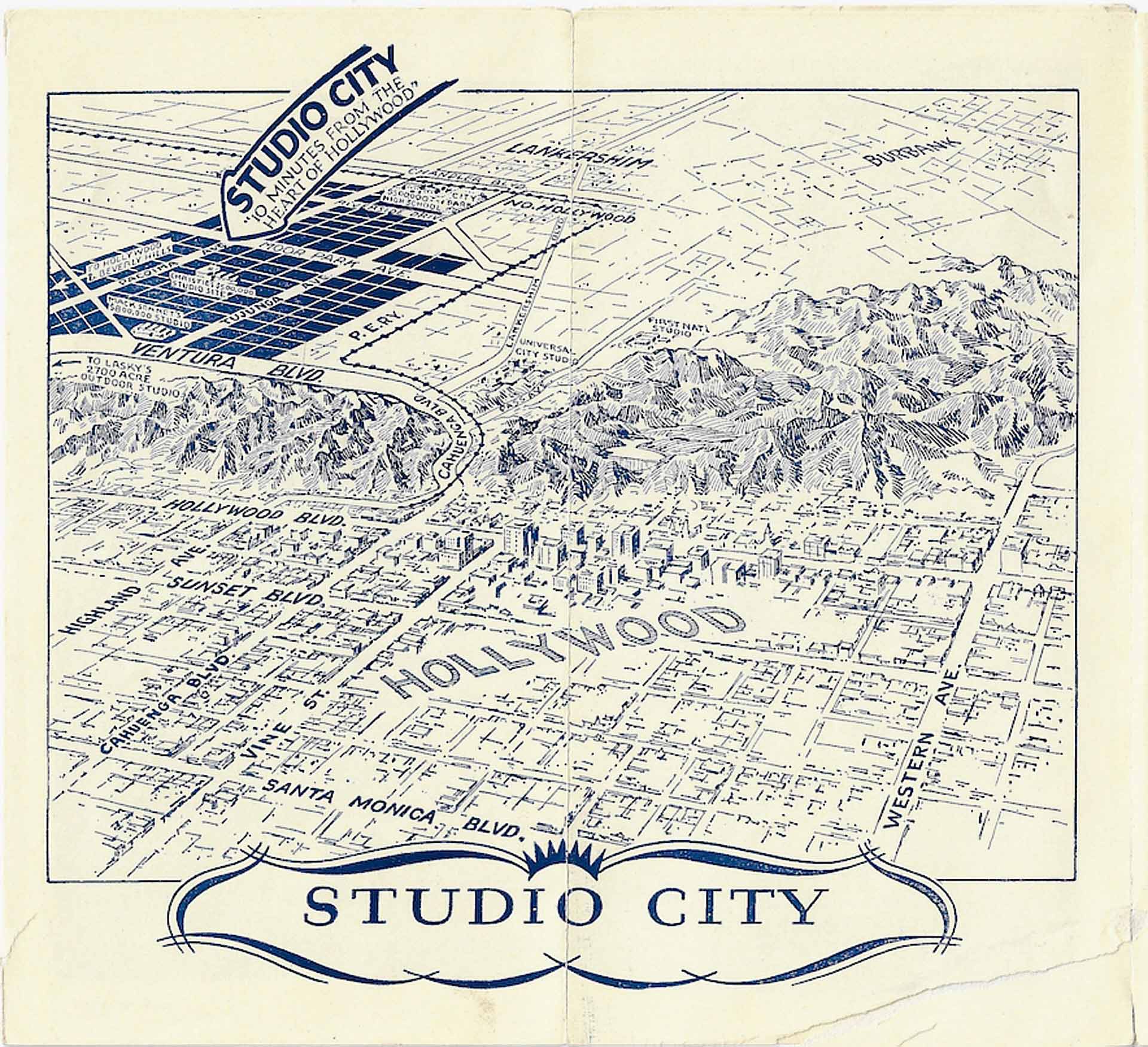
In late 1922, Hollywood Country Club joined with real estate firm Sunday, Merrick, & Ruddick to subdivide all hillside property in the upper reaches of Coldwater Canyon in order to raise funds and pay debts. Each purchase of these half- to two-and-a-half-acre home sites ranging from $1,000 to $6,500 came with free membership in the club, subject to exclusive club regulation. Realtors announced they were looking to turn this acreage into a “high class country home, week-end lodge and permanent residential district.” The Los Angeles Herald called the area “America’s most beautiful suburb.”
Many still enjoyed the amenities and lavish surroundings at Hollywood Country Club for more than a decade. Social organizations continued hosting regular meetings and special events, while business groups enjoyed elaborate dinners, banquets and balls. A busy golf tournament schedule continued, with diverse organizations like the Rotary Club, Hollywood Businessmen’s Club, Los Angeles Times and California Golf Association sponsoring events.
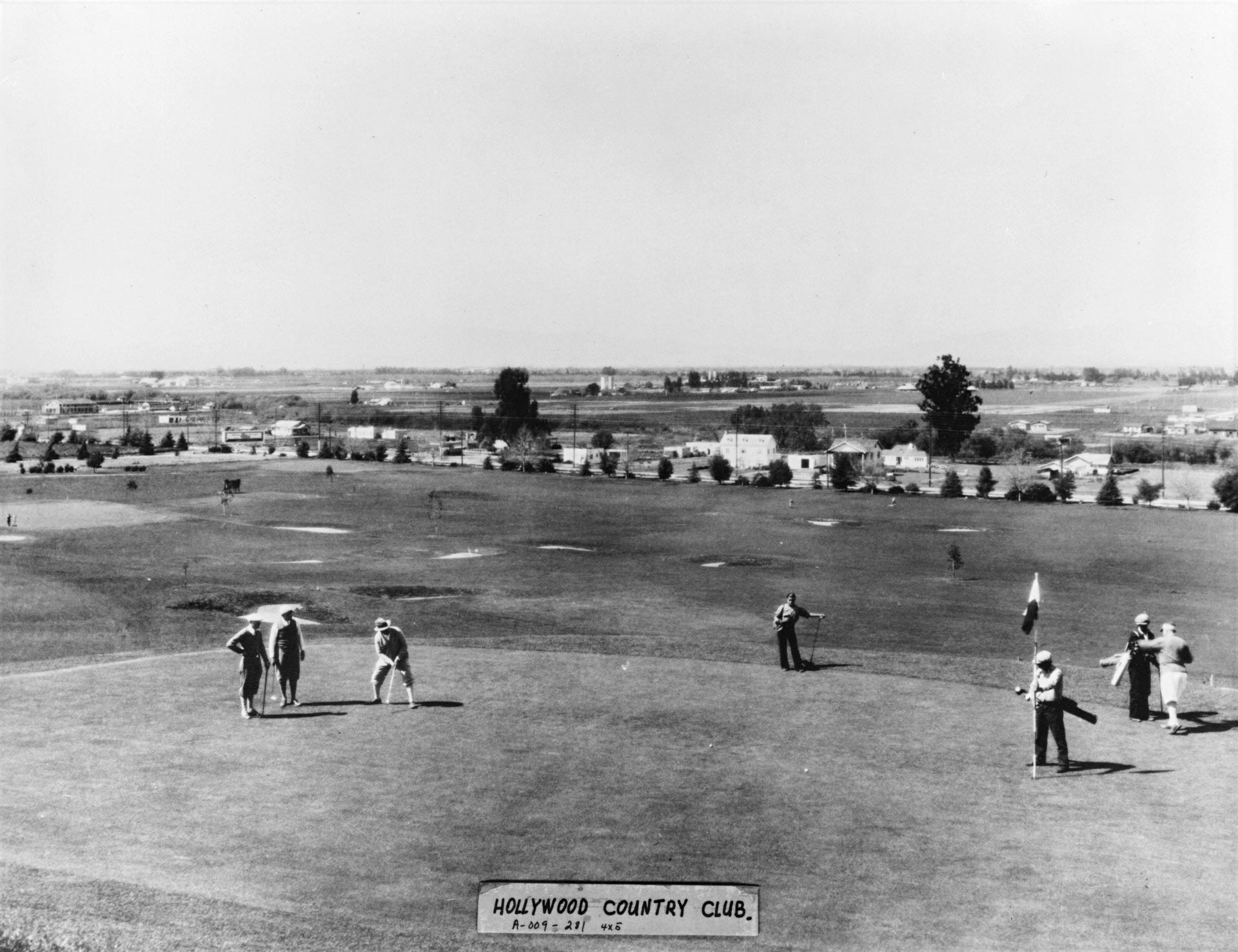
The Hollywood film industry in particular rented the club for its upscale surroundings and more affordable fees. Unions, studios and associated groups celebrated special events. Many entertainers shot regular rounds of golf on its links, while the American Society of Cinematographers and casting directors hosted regular member tournaments.
Financial problems continued, however. In 1927, the club sold 240 acres east of the clubhouse and golf course adjoining Ventura Boulevard to a consortium of three realty companies to sell as upscale, exclusive home lots called Hollywood Country Club Park, just as Mulholland Highway, Ventura Boulevard, Laurel Canyon and others were finally paved. When everything seemed to be improving, however, the Wall Street crash and Great Depression decimated finances. The club tried dropping membership fees like many others, but the bloodletting continued, and by June 1937 there were rumors of a sale.
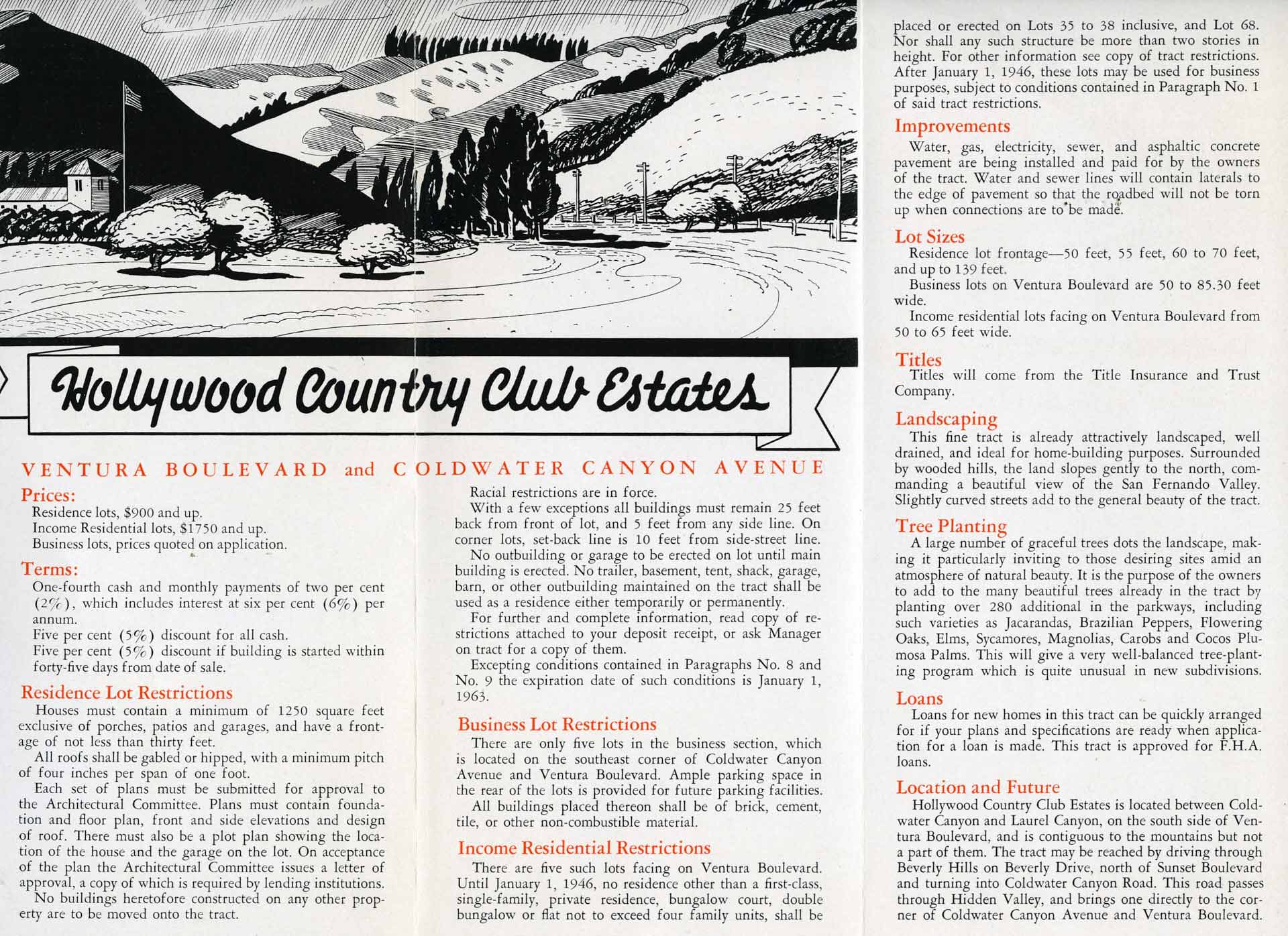
Hollywood Country Club outlasted most of the Valley country clubs, finally throwing in the towel late that summer. The golf course was sold to developers Frank H. Ayres & Sons, who opened the tract in 1938 under the name Hollywood Country Club Estates. Young movie stars like Jack Carson purchased property there, which was marketed with the phrase “One of the particularly desirable features of this location is the lowered temperature caused by cooling ocean breezes which find their way through the Canyon.”
The elite Harvard School purchased the clubhouse and 20 acres for its private students for $60,000 in late August 1937, opening for the new school year in September. The clubhouse was eventually demolished, but Harvard–Westlake School continues to operate at the site today.
Not much remains of the original club and golf course — save for the name of Fairway Avenue, which extends just south of Ventura Boulevard. Although it is now only a distant memory, Hollywood Country Club lured high-end residents and real estate development to the Studio City area for the very first time as people realized the beauty and luxurious lifestyle that the land could offer residents.
